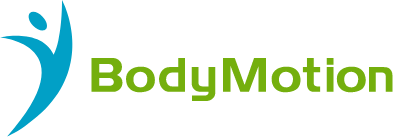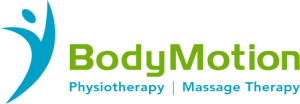With so many terms circulating in the industry-specific pressure points for massage, touch point massage, and myofascial release exercises — it’s easy to get tangled up in a web of confusion about what type of support you really need to diagnose and treat your condition.
You may wonder, ‘What does a myotherapist do?’ or ‘Do I need massage and dry needling?’ Unfortunately, without some insight into the space, you won’t know who to speak with to get some real solutions.
Deciding between physiotherapy, remedial massage therapy vs myotherapy, in particular, is understandably hard, given that both modalities treat a range of non-specific soft tissue pain and ailments.
Whether you’re seeking relief from recurring muscle pain or the best therapeutic touch for your aching body, our specialist team at BodyMotion Physiotherapy are breaking down all you need to know about the difference between myotherapy and remedial massage.
Physiotherapy vs Remedial Massage vs Myotherapy
What is Physiotherapy?
Physiotherapy is a specialised field of manual therapy that plays a significant role in the assessment, diagnosis, treatment, and prevention of a vast array of musculoskeletal problems arising from injury, disease, illness, or ageing.
With early roots spanning as far back as the 19th century, physiotherapy has evolved into a critical branch of the rehabilitative healthcare system. It is firmly rooted in medical science and is considered a part of conventional medicine, distinct from alternative medical practices.
Treatment Approach
As a broad term, physiotherapy:
- Focuses on enhancing patient health and fitness.
- Encourages patients to take charge of their health through recovery and injury prevention techniques.
- Treats a wide range of patients, including infants with birth defects, elderly individuals with age-related disorders, and adults with trauma-related issues.
- Involves thorough assessment, including medical history review and physical examination.
Common Conditions Treated
Some common injuries and ailments physiotherapy can address include:
- Running injuries (e.g., runner’s knee, shin splints).
- Sports injuries (e.g., Tennis Elbow, Golfer’s Elbow).
- Back and neck pain, arthritis, joint pain.
- Disk herniation, sciatica, tension headaches.
- Postoperative surgery recovery.
Physiotherapists are known for their comprehensive approach to treatment, focusing on detailed assessments and recommending exercises that patients can perform at home or in a gym. This holistic approach is geared towards enabling patients to achieve better physical abilities and a higher quality of life.
What is Remedial Massage?
Remedial massage is a broad term for targeted, therapeutic forms of massage aimed at treating damaged, knotted, tense, or immobile muscles, tendons, ligaments and connective tissue. It is a holistic approach that uses different techniques to facilitate healing, promote relaxation, and enhance overall well-being, including:
- Deep tissue massage
- Soft tissue massage
- Therapeutic massage
- Relaxation Massage
- Sports Massage
- Maintenance Massage
- And more
Remedial massage goes beyond a standard relaxation massage. It involves a personalised treatment approach that directly deals with the root cause of your discomfort, delivering:
- Manage chronic muscle pain
- Improve physical performance
- Reduce symptoms of sciatica
- Relieve tension headaches
- Increase blood flow
- Lower and prevent swelling
- Loosening muscles for a great range of motion
While you can expect to leave feeling relaxed, remedial massage’s primary purpose is therapeutic relief and muscle restoration.
What is Myotherapy?
Myotherapy is a more specialised form of remedial massage, often referred to as sports or medical massage, that focuses on soft tissue support. The treatment is named after the myofascial tissue it targets, referring to the delicate tissue sheets surrounding the muscles in our tendons and ligaments. It is aimed at aiding in rehabilitation and managing pain and injuries, such as acute muscle damage and restricted joint management.
After a systematic evaluation, your therapist will begin applying touch point massage release, prescribing myofascial release exercises, and utilising various other methods to alleviate/prevent muscle and myofascial discomfort.
Pressure points for massage – hypersensitive spots in the muscle fibres often caused by overuse or injury – are a primary focus in myotherapy. Myotherapists use specialised massage techniques to ease these tense spots, employing their hands, fingers, elbows, or knuckles for targeted relief.
Myotherapy integrates the fundamentals of anatomy, physiology, and biomechanics to address muscular pain and dysfunction in the human body, employing a variety of proven treatment techniques.
What Does a Myotherapist Do to Prevent or Relieve Myofascial Issues?
Regularly receiving myofascial release therapy on key trigger points can:
- Alleviate chronic lower back pain
- Improve range of motion
- Increase the body’s natural recovery process
- Improve circulation
- Minimise delayed onset muscle soreness
- Lessen stress and anxiety
- Address shin splints, poor posture, sprains, and other issues
- Enhance life quality and overall well-being in patients with terminal conditions, including cancer or multiple sclerosis
- Support pain management in fibromyalgia cases, especially when used in conjunction with other treatments
By targeting specific pressure points for massage, a myotherapist can tap into our bodies’ biologically built-in ability to self-heal, engaging the muscles, helping to relax the mind and alleviating stress. Furthermore, in the past decade, research has indicated that addressing painful trigger points through myotherapy might aid muscle contractions and enhance muscular movement.
Therefore, myofascial release exercises directly release tension in the fascial tissues, which can be especially useful in managing myofascial pain and improving overall body function. Some key points to understand with myotherapy are:
- Pressure Points for Massage: In myotherapy massage, pressure points are specific areas on the body where muscle tension or knots tend to form. Applying pressure to these points can help relieve pain and stress.
- Myofascial Release Trigger Points: This technique involves applying gentle, sustained pressure to the myofascial connective tissue to eliminate pain and restore motion by releasing tightened areas known as trigger points.
- Massage Dry Needling: Dry needling in massage involves inserting fine needles into the skin at specific muscle trigger points to relieve pain, reduce muscle tension, and improve mobility, distinct from acupuncture in its methodology.
- Myofascial Release Exercises: These exercises are designed to stretch and loosen the myofascial tissue around muscles, improving flexibility and reducing pain. They often involve applying pressure to affected areas with foam rollers or balls.
Regardless of the condition or treatment needed, our experts devise a comprehensive and personalised plan for each individual, incorporating elements like joint manipulation and remedial massage to focus on the afflicted body areas. They leverage their in-depth understanding of anatomy, physiotherapy, osteopathy, neurology, and chiropractic care to thoroughly assess a patient’s overall physical state.
Learn More on the Difference Between Physiotherapy, Remedial Massage and Myotherapy with BodyMotion Physiotherapy
From targeting pressure points for massage or prescribing myofascial release exercises, at BodyMotion Physio, our professional team is dedicated to ensuring your body operates as it should.
To learn more or book an appointment and discuss a treatment tailored to your requirements, feel free to contact our welcoming staff at (03) 9873 3333 or by submitting an online enquiry today.



